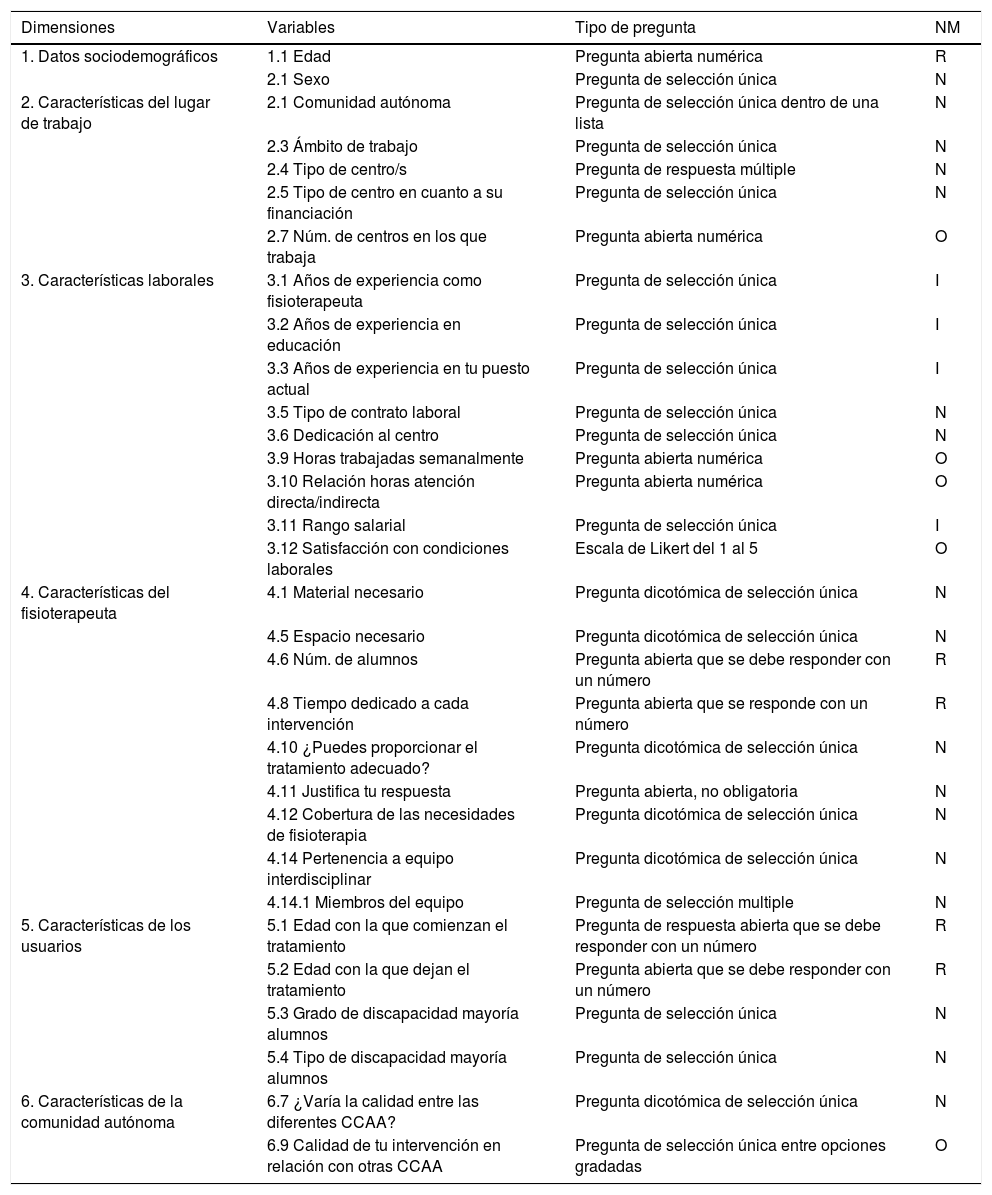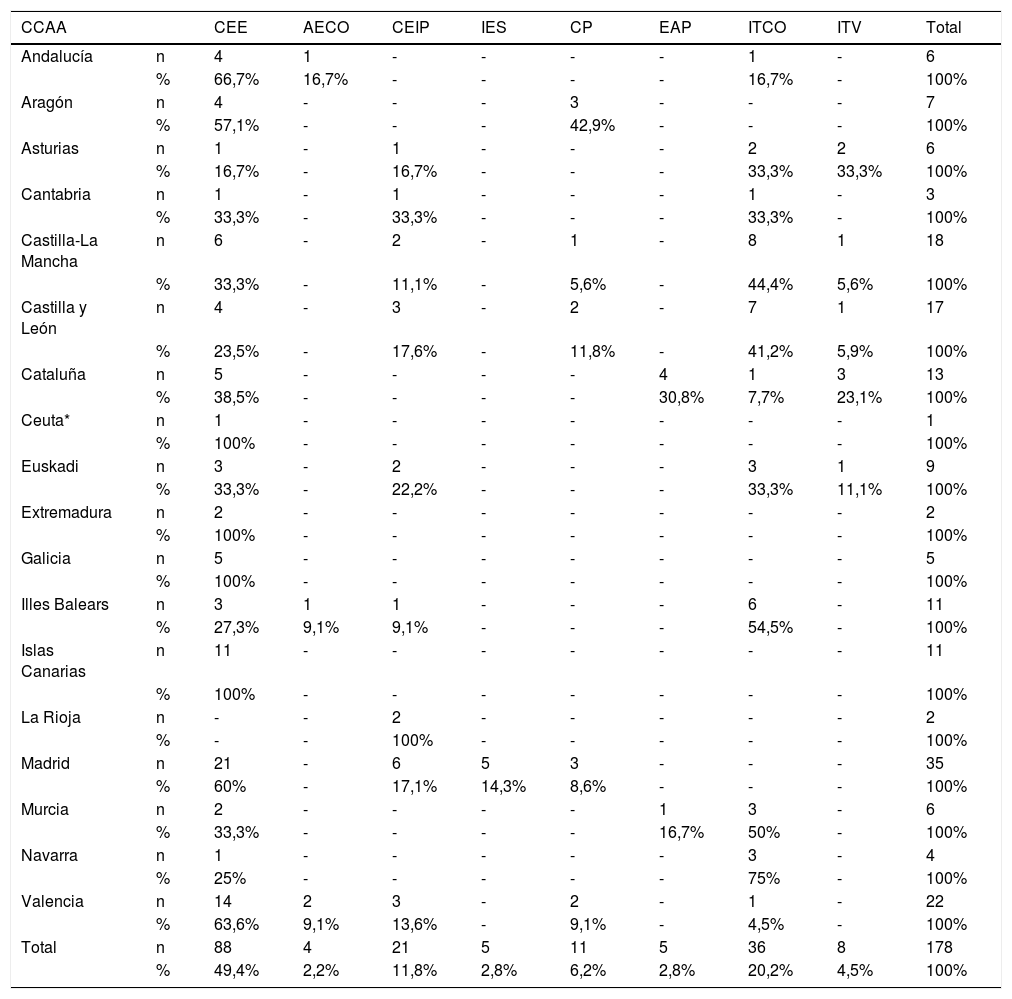El alumnado con necesidades educativas especiales puede necesitar el apoyo específico y especializado de fisioterapia, con el fin de facilitar el desarrollo de su máximo potencial y ayudar en su inclusión educativa. La información acerca de la implementación de la fisioterapia en los centros educativos en el territorio español es muy escasa. El objetivo de este estudio es describir la situación de la fisioterapia en los centros educativos y compararla entre las diferentes comunidades autónomas.
Materiales y métodosSe realizó un estudio descriptivo y transversal a través de la elaboración de una encuesta online, diseñada junto a un panel de expertos a través del método Delphi. Se incluyeron seis bloques temáticos relacionados con la atención de fisioterapia, las condiciones laborales de los fisioterapeutas en los centros educativos y con la cobertura de las necesidades del alumnado.
ResultadosSe obtuvieron 178 respuestas. Su distribución geográfica fue homogénea, aunque se detectaron grandes diferencias entre las comunidades autónomas. La mayoría de las personas encuestadas trabajan en centros de educación especial y existen comunidades autónomas en las que no se trabaja en centros ordinarios. Solo el 28,4% contestaron que la figura del fisioterapeuta está integrada en los equipos de orientación educativa de su comunidad autónoma y tienen la función de determinar la necesidad del recurso.
ConclusionesEl desarrollo del trabajo de fisioterapia en los centros educativos como apoyo al alumnado con necesidades educativas especiales es desigual entre las comunidades autónomas, y en algunas, se considera insuficiente.
Students with special educational needs may need the specific and specialized support of Physiotherapy in order to facilitate the development of their maximum potential and help in their educational inclusion. The information about school-based Physical Therapy development in Spain is very scarce. The objective of this study is to describe the situation of physiotherapy in educational centers and compare it among the different autonomous communities.
Materials and methodsA descriptive and cross-sectional study was carried out through the elaboration of an online survey, designed together with a panel of experts using the Delphi method. Six thematic blocks were included related to the provision of the physiotherapy service, working conditions and the coverage of the students’ needs.
Results178 responses were obtained. Their geographical distribution was homogeneous, although large differences were detected among the autonomous communities. Most of the participants work in special education centers and there are autonomous communities in which physical therapists do not work in ordinary centers. Only 28.4% answered that the physiotherapist is integrated into the educational orientation teams of their autonomous community and has the function of determining the need for the resource.
ConclusionsSchool-based Physiotherapy services to support students with special educational needs is unequal among the autonomous communities, and in some of them it is considered insufficient.
Article
Si ya tiene sus datos de acceso, clique aquí.
Si olvidó su clave de acceso puede recuperarla clicando aquí y seleccionando la opción "He olvidado mi contraseña".












